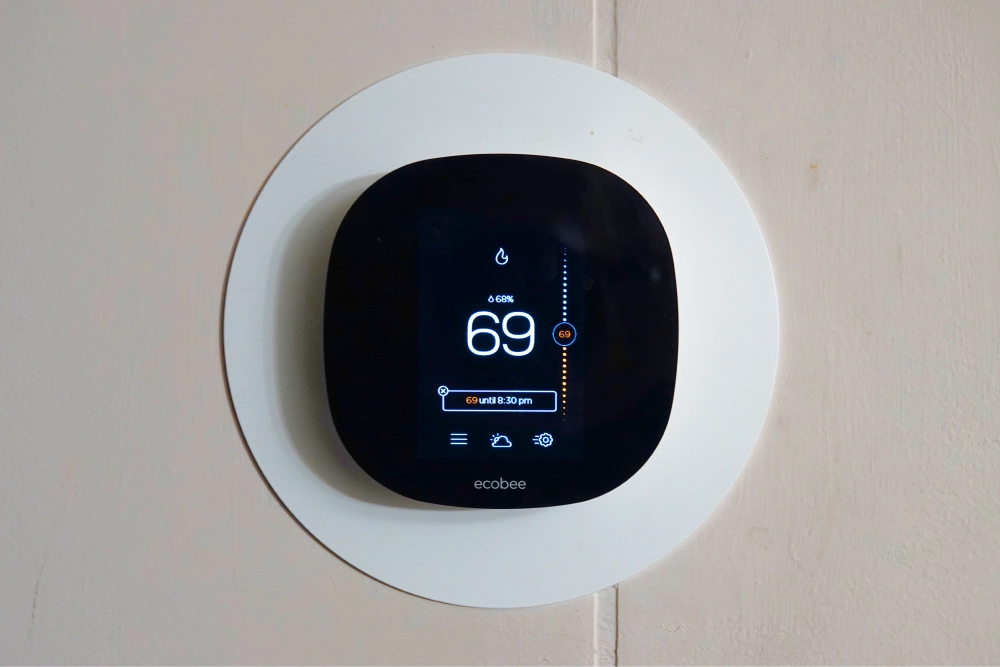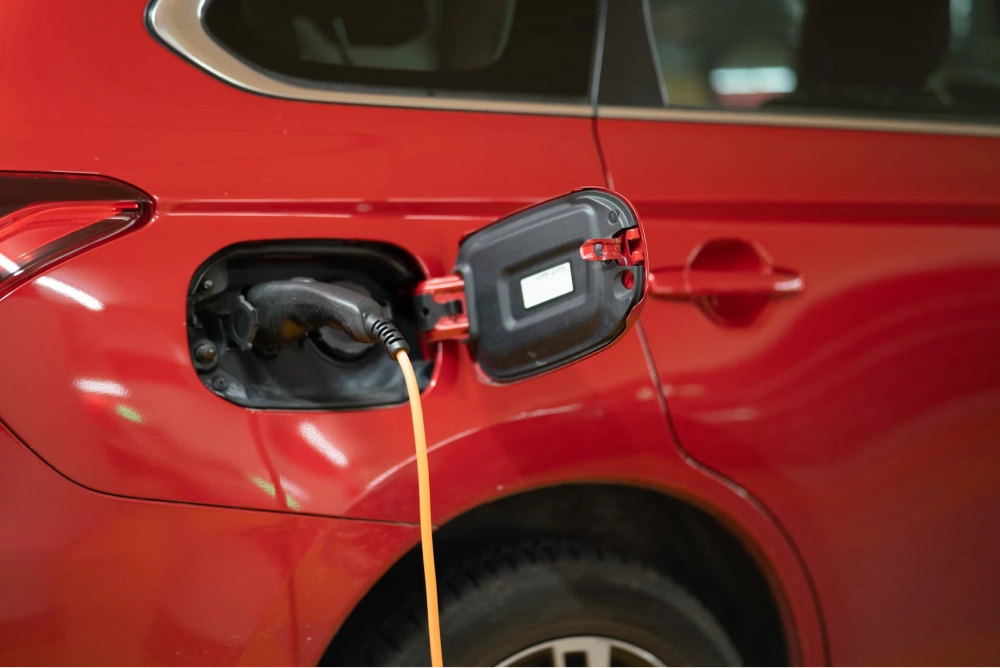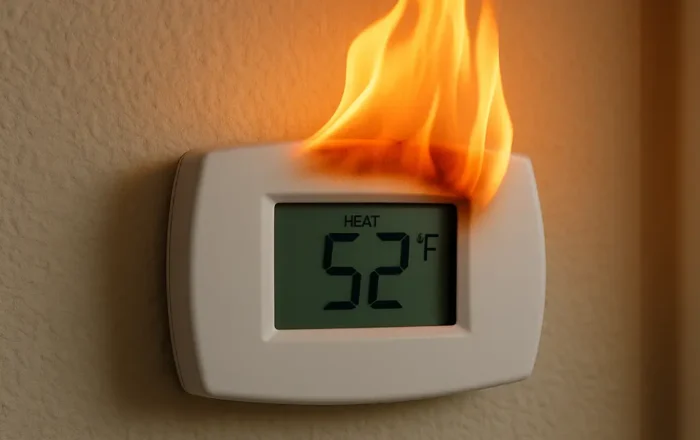Is My Thermostat Broken?
5 minute readHow to diagnose a faulty thermostat, fix common issues, and know when it’s time for a replacement.
Home > Blog > How to Reduce Your Carbon Footprint
27 simple ways to reduce your carbon footprint
5 minute read • Last update October 2024

According to Our World in Data, the average person in the United States emits 16 metric tons of carbon annually, compared to the global average of 4 metric tons. If you’re interested in learning to reduce your carbon footprint, you’re in the right place.
There are many ways to reduce your carbon footprint, and many don’t require significant changes to your current lifestyle. You can reduce your carbon footprint by changing how you eat, improving your home’s energy efficiency, optimizing your transportation, being mindful about your water use, limiting single-use items, supporting renewable energy, making more conscious shopping choices, and purchasing offsets.
Here’s a comprehensive list of actionable steps and savvy energy tips to help you start reducing your carbon footprint.
1. Reduce your meat consumption. Cutting back on your consumption of meat, including beef, pork, poultry, fish, and more, is a simple and healthy way to reduce your carbon footprint because animal agriculture is responsible for significantly more carbon emissions than the farming of plants. Even eating plant-based a few days a week goes a long way. Research shows that if people followed the dietary guidelines already in place in many countries (the US included), we could reduce global emissions by 30%.
2. Choose local and seasonal produce. Eating fruits and vegetables grown closer to you helps reduce emissions related to the transportation of the food you purchase. Plus, local foods from nearby farms tend to be fresher and can taste better because they are sold soon after harvest.
3. Limit food waste. By planning your meals ahead of time and properly storing food, you can cut down on the food you throw in the bin. Less food in the bin equals less food purchased at the store to keep your fridge and pantry full.
4. Start composting. Composting food waste lowers greenhouse gases by improving carbon sequestration and preventing methane emissions. Most food and yard waste can be composted, and it’s relatively easy to get started. Learn more in our composting guide for beginners.
5. Buy in bulk when you can. Buying dry food goods in bulk, such as dried fruit, rice, quinoa, pasta, dried beans, lentils, nuts, and seeds, helps to reduce carbon emissions by decreasing the number of trips to the store and minimizing packaging waste.
6. Conduct a home energy audit. Whether you opt for a DIY or professional approach, home assessments pinpoint energy efficiency problems like drafty windows, outdated appliances, and inadequate insulation. From there, you can make improvements that reduce energy consumption by eliminating waste.
7. Invest in high-efficiency appliances. Choose ENERGY STAR-certified appliances when upgrading or replacing household devices. These appliances are specifically designed to use less energy, whether to heat water, operate refrigerators and freezers, or power other household electronics.
8. Master your thermostat settings. It’s relatively straightforward to optimize energy efficiency by adjusting your thermostat settings. It might not feel like a big difference, but an adjustment of just 2 degrees can reduce your carbon footprint by 2000 pounds a year. In the summer in Texas, set your thermostat to 78 degrees Fahrenheit during the day.

9. Enhance your home’s insulation. One of the most effective ways to reduce carbon footprint excess is proper insulation, which prevents heat loss in winter and heat gain in summer. Research shows that insulating just 4 million homes (about 4% of all North American housing stock) could lead to a reduction in carbon dioxide emissions equivalent to planting 667 million acres of trees.
10. Turn off the AC when the windows are open. Natural ventilation is always preferable to using a cooling system that takes energy to operate. However, when you do switch on your AC units, be sure to check that windows and doors are closed to avoid wasting valuable home energy.
11. Upgrade to LED light bulbs. Replace traditional incandescent light bulbs with LED bulbs. These not only consume less electricity but also last significantly longer. For instance, while a regular incandescent bulb may last around 1000 hours, an LED bulb can last up to 25,000 hours.
12. Turn off the lights when you leave the room. Learning to turn your lights off when leaving a room is a great way to save energy by using only what you need. For added convenience, consider installing sensors, timers, and other automatic lighting controls.
13. Unplug your devices when not in use. Electronics still use energy even though they are turned off. To limit the impact of “phantom energy” on your carbon footprint, unplug devices when you aren’t using them or utilize a smart power strip.
14. Drive your car less. Consider cycling or using public transport where possible as group transport is more fuel efficient. Where public transportation isn’t feasible, try to avoid traffic and congestion wherever possible to eliminate unnecessary idling. Additionally, keeping your tires properly inflated increases efficiency.
15. Consider purchasing an electric or hybrid vehicle. When it’s time to upgrade your car, switching to a hybrid or electric vehicle will minimize environmental pollutants, particularly over longer distances. While it’s a big investment, federal tax credits and state and utility incentives can often offset initial costs.

16. Take fewer flights. It’s not always possible to avoid flying altogether. However, the average flight’s carbon emissions reach up to 3.15 grams per gram of fuel, so minimizing air travel and reducing carbon footprints go hand in hand. If you must fly, consider traveling economy class to lower your carbon impact, and always evaluate the environmental cost before booking a round-trip flight.
17. Avoid unnecessary braking and acceleration. This driving style increases your vehicle’s fuel consumption, thereby increasing your footprint. On longer trips, use cruise control to save gas.
18. Take shorter showers. Water heating is a huge driver of residential electricity consumption. Taking shorter showers can therefore help reduce your carbon emissions.
19. Invest in a low-flow showerhead. A low-flow showerhead reduces a person’s carbon footprint primarily by lowering both water usage and the energy required to heat that water.
20. Buy vintage or recycled clothing. The fast fashion industry is estimated to account for as much as 10% of global carbon dioxide emissions. So, think carefully about whether you really need that brand-new branded t-shirt. Instead, try to buy vintage or recycled clothing to stop the cycle of waste and pollution.
21. Reuse, repair, and donate. Extend the lifespan of consumables like clothes, electronic items, furniture, and more, by reusing, repairing, or donating items to others once you no longer need them. By contributing to a circular economy, you can improve carbon footprint trends spanning a wider circle of households.
22. Eliminate single-use plastics. Cutting out single-use plastic is already a well-known strategy for reducing carbon footprint damage. But, with so much plastic out there, knowing where to start can be overwhelming.
23. Switch to a renewable energy plan. Consciously choosing renewable energy is a powerful way to reduce reliance on fossil fuels and support climate action. Look for providers who prioritize clean energy sources and consider installing solar panels to improve fuel efficiency.
24. Buy less and choose wisely. Higher quality items last longer and reduce waste.
25. Seek out sustainable brands. Many companies run their businesses with a commitment to low-carbon practices. Purchase from these companies to reduce your carbon footprint.
26. Reduce your electronics waste. When it comes time to replace your old electronics, follow responsible electronic recycling practices.
27. Participate in offset programs. For unavoidable emissions, participate in offset programs like environmental funds to balance your footprint.
If you’re looking for more energy tips and want to reduce your carbon footprint, BKVE Energy is a great choice. We offer electricity plans that are 29% and 100% renewable. Enter your zip code to get started.
Graham Lumley, Digital Marketing Manager at BKV Energy, leads digital and traditional marketing strategies, focusing on educating Texans about the state's deregulated energy market. With over 8 years of marketing experience, he creates content to help consumers understand and save on their energy bills, bringing a fresh and dynamic approach to the industry.

How to diagnose a faulty thermostat, fix common issues, and know when it’s time for a replacement.

Ceiling fans use less electricity than air conditioners, offering an efficient, low-cost way to stay cool year-round in Texas
Get $50 off your electric bill!
Use code BKVEJOINUS50
Enter your zip code to shop BKV Energy's affordable, fixed-rate Texas electricity plans. Use the promo code for $50 off your electric bill.